Introduction
Finding the right fitness regimen for a busy schedule can be tough. Many people struggle to fit exercise into their daily routine. Home workouts, especially HIIT (High-Intensity Interval Training), offer a solution.
They are quick, effective, and don’t need much space or equipment.
One key fact about HIIT is that you can do it at home for free. This makes fitness accessible to everyone, no matter their budget or living situation. Our guide will show you different types of HIIT workouts ranging from cardio exercises to bodyweight exercises that you can easily integrate into your life.
Whether you’re new to exercise or looking for ways to spice up your routine, we have something for everyone. Ready to get started?
Benefits of HIIT Workouts
HIIT workouts boost your metabolism and help you burn calories even after your session ends. These routines efficiently combine fat loss and muscle gain, making them perfect for busy lifestyles.
Increased metabolism
HIIT workouts can significantly boost your metabolism. They help increase calorie burn, even after you finish exercising. This means you continue to burn calories while resting. HIIT training sessions alternate between high-intensity bursts and recovery periods.
These quick workouts trigger changes in your body that promote muscle building and fat loss.
A faster metabolism makes it easier to manage weight effectively. Regular participation in these exercise routines can lead to better heart health and lower blood pressure as well.
With options like bodyweight HIIT, these activities remain accessible for at-home fitness enthusiasts of all levels. Discover the different types of HIIT workouts next!
Burns fat and builds muscle
After boosting your metabolism, it’s time to focus on how HIIT workouts burn fat and build muscle. These high-intensity interval training sessions effectively increase calorie burn while toning the body.
Studies show that regular participation in HIIT can reduce body fat, heart rate, and blood pressure.
Bodyweight exercises in a home exercise routine allow you to engage multiple muscle groups at once. Circuit training techniques help optimise time spent working out while providing similar health benefits as traditional cardio workouts.
As people progress with their fitness levels, they can ramp up intensity for even better results. Beginners should start slowly with 3-4 speed intervals before advancing further into their workout plans.
Can be done anywhere
HIIT workouts can be done anywhere, making them convenient for everyone. You do not need a gym or expensive equipment to enjoy the benefits of high-intensity interval training. These workouts provide an excellent opportunity for at-home fitness.
You can complete your workout indoors or take it outdoors for fresh air and a change of scenery.
A variety of HIIT routines exist, from bodyweight exercises to cardio-based movements and resistance training. Beginners can start with just 3-4 speed intervals and increase the intensity as they build strength and endurance.
This flexibility allows you to fit these effective workouts into any schedule, making it easy to burn fat and build muscle wherever you are.
Different Types of HIIT Workouts
High-intensity interval training includes several workout styles. You can choose bodyweight exercises, cardio workouts, or resistance training to keep things exciting.
Bodyweight exercises
Bodyweight exercises provide an excellent way to perform HIIT workouts you can do at home. You can build muscle, tone your body, and improve cardio fitness without any equipment. These exercises include push-ups, squats, and lunges.
They use your body’s weight for resistance. Beginners can start slowly with just a few repetitions. As strength increases, they should try more challenging variations.
HIIT workouts featuring bodyweight exercises help speed up metabolism and burn fat quickly. You achieve this by alternating high-intensity movements with brief rests. This method engages multiple muscle groups simultaneously.
It creates a fast-paced routine that boosts endurance in less time than traditional workouts. Regular practice of these activities may enhance heart rate and lower blood pressure too.
Cardio-based exercises
Cardio-based exercises offer an effective way to boost your heart rate and improve endurance. These activities fit well into high-intensity interval training (HIIT) routines, making them perfect for at-home fitness.
You can perform these workouts anywhere, from your living room to a nearby park. Engaging in HIIT helps increase calorie burn and reduces body fat, heart rate, and blood pressure.
These workouts can be simple yet powerful. Jumping jacks or burpees get your blood pumping quickly. Regular cardio paired with HIIT also enhances bone health and balance. Including various cardio exercises keeps the routine fresh and exciting.
Next, we will explore different types of HIIT workouts you can try at home.
Resistance training
Resistance training forms a key part of HIIT workouts. It engages multiple muscle groups, promoting strength and endurance. These exercises can tone your body effectively at home without any expensive equipment.
You can try options like the leg burner or dynamic movement to challenge yourself.
Home HIIT workouts also improve cardiovascular fitness alongside building muscle. This combination helps increase calorie burn while reducing body fat, heart rate, and blood pressure.
Resistance training boosts metabolism, making these routines accessible for everyone looking to enhance their health and fitness levels through high-intensity interval training.
At-Home HIIT Workouts You Can Try
Explore various at-home HIIT workouts that cater to all fitness levels and ignite your motivation. Each routine offers a chance to challenge yourself while enjoying the convenience of training from home.
Get ready to sweat and push your limits as you discover exciting moves!
Beginner routine
A beginner HIIT routine focuses on simplicity and gradual improvement. Start with 3-4 speed intervals to build stamina without feeling overwhelmed. This workout style combines bodyweight exercises with cardio, making it effective for burning fat and building muscle.
You can perform these workouts at home or outdoors, depending on your preference.
Consider adding basic exercises like squats, jumping jacks, and push-ups to your routine. These movements strengthen your body while keeping your heart rate up. Incorporating intervals of higher intensity with rest periods will boost calorie burn and improve endurance efficiently.
With regular practice, you will notice better fitness levels in less time.
Intermediate routine
An intermediate HIIT routine combines intensity with variety. Participants should perform exercises like squats, burpees, and mountain climbers for 30 seconds. Rest for 15 seconds between each exercise.
This format helps boost metabolism and burns fat effectively.
Incorporating resistance training into your workout enhances muscle strength and cardio fitness. You can combine bodyweight exercises with light weights or resistance bands to challenge yourself further.
Regularly engaging in HIIT workouts tones the body and builds endurance while providing health benefits similar to traditional cardio workouts.
Advanced routine
Transitioning from the intermediate routine, the advanced routine takes your HIIT workouts to a new level. This session challenges your body with intense exercises that build strength and endurance.
Try routines like the leg burner or 5 round mayhem. These workouts demand maximum effort in each interval. They boost metabolism, burn fat, and strengthen muscles effectively. Participants can expect improved cardiovascular fitness while toning their bodies.
Short bursts of high-intensity activity increase calorie burn significantly. Advanced workout sessions often combine resistance training with dynamic movements for optimal results.
Embrace these challenging exercises to maximise your at-home fitness journey through high-intensity interval training.
Tips for Making the Most of Your At-Home HIIT Workout
Warm up before you start. A good warm-up primes your body for action and helps prevent injuries. Finish with a cool-down session to aid recovery. Include exercises that boost balance and flexibility to support overall fitness.
Stay attentive to how your body feels, and adjust the workout’s intensity if needed to maximise your results.
Proper warm-up and cool-down
A proper warm-up prepares your body for high-intensity interval training (HIIT). It boosts blood flow and increases heart rate. Spend 5 to 10 minutes doing dynamic stretches or light cardio.
This routine reduces the risk of injury and improves performance.
Cooling down is equally important after your workout. Take time to lower your heart rate gradually with gentle movements. Stretching helps reduce muscle tightness and soreness. These simple steps enhance recovery and keep you motivated for future sessions at home or outdoors.
Moving on, let’s explore different types of HIIT workouts you can try.
Incorporate balance and flexibility exercises
Incorporating balance and flexibility exercises into your HIIT workouts can enhance overall fitness. These moves help tone and strengthen the body while improving coordination. Adding simple stretches or yoga poses boosts flexibility and prevents injuries during high-intensity training sessions.
Integrating balance exercises enhances stability and core strength. Perform single-leg stands or dynamic movements like lunges to engage various muscle groups. This approach complements activities like cardiovascular workouts, creating a well-rounded at-home fitness routine.
Incorporate these elements into your routine to reap the full benefits of high-intensity interval training.
Listen to your body and adjust the intensity as needed.
Listening to your body is crucial during HIIT workouts. Each person has different fitness levels, so adjustments are necessary. Beginners should start slowly with 3-4 speed intervals and increase as they improve.
If you feel fatigued or strained, take a moment to rest or reduce the intensity. Adjusting helps prevent injuries while still offering the benefits of high-intensity interval training.
Regularly tuning into your body’s signals enhances performance for at-home fitness. By doing this, you can maintain an effective workout that burns fat and builds muscle without pushing too hard.
You will enjoy better results when you adjust based on how you feel during each session. This approach ensures that you gain all the health benefits associated with effective HIIT workouts while keeping exercise safe and enjoyable.
FAQs
1. What is high-intensity interval training (HIIT) for at-home fitness?
High-intensity interval training, or HIIT, is a form of exercise that involves short bursts of intense activity followed by periods of lower intensity exercises or rest. It’s ideal for at-home fitness due to its versatility and minimal equipment requirements.
2. Can beginners do HIIT workouts at home?
Yes, beginners can do HIIT workouts at home. Many beginner workout routines incorporate elements of high-intensity interval training as it helps in improving cardiovascular health and overall strength.
3. What are some examples of HIIT workouts you can do at home?
Examples include sprinting on the spot for 30 seconds followed by walking in place for a minute or doing burpees with intervals of slow stretching exercises.
4. Are there benefits to doing high-intensity interval training (HIIT) as part of my at-home fitness routine?
Absolutely! High-intensity interval training has been shown to increase metabolism, improve heart health, build endurance and burn fat more effectively than traditional steady-state cardio routines.






